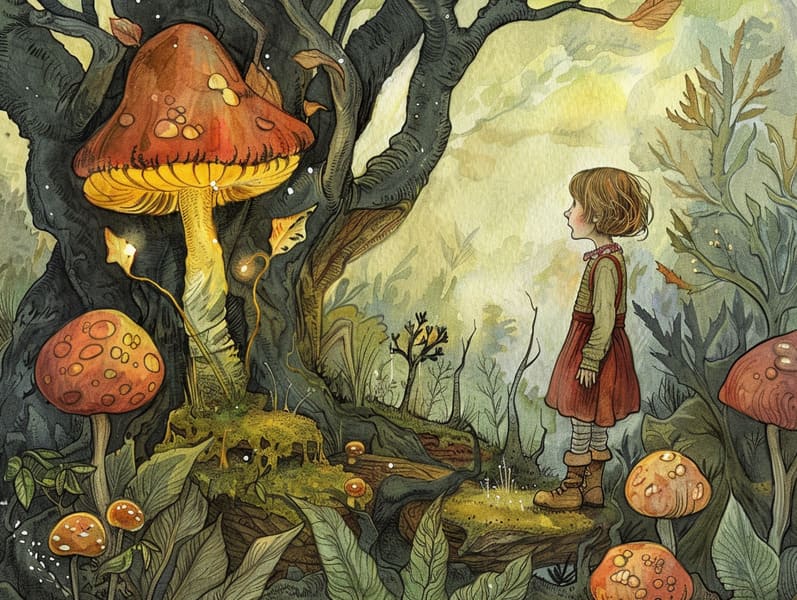Exploring the Roots of Children's Fairy Tales and Their Steadfast Delight.
Exploring the Roots of Children's Fairy Tales and Their Steadfast Delight.
Blog Article

Fairy tales have historical significance. These tales have been shared from one generation to the next well before they were ever put on paper. They developed from a variety of traditions, including Asian traditions. They were initially passed along among adults, often carrying themes and messages related to the societal norms and beliefs of the time.
The Brothers Grimm, Jacob and Wilhelm, were among the first to gather many of these beloved tales. Their anthology, "Grimm's Fairy Stories," included stories like "The True Bride," "Hansel and Grethel," and "Snow-White and Rose-Red," which have since become hallmarks in the world of beloved fairy tales. Similarly, H. C. Andersen's whimsical tales, such as "The Mermaid's Tale," and "The Ugly Duckling," have won hearts worldwide, securing their place in the pantheon of timeless fairy tales.
Despite their ancient origins, traditional fairy tales remain as relevant as ever, especially as children's night stories. These whimsical stories are now available in diverse formats, including vividly illustrated books, magical animations, and free fairy tales online.
Their persistent charm can be ascribed to several delightful features:
Important Morals: Traditional fairy tales often present important moral lessons. Stories like "The Story of the Boy Who Cried Wolf" teach the value of truth, while "The Race of the Tortoise and the Hare" point out the merits of perseverance and humbleness. These tales offer children clear distinctions between good and bad, shaping their moral compass in a soft yet significant way.
Sympathy and Perception: Traditional fairy tales frequently portray individuals facing problems and hurdles, urging children to empathize with their struggles and boost their triumphs. For instance, "Beauty's Beast" demonstrates the virtue of seeing beyond the surface to realize the inner being of a person, enhancing tenderness and awareness.
Cultural Awareness: Many fairy tales are rooted in the cultural contexts from which they originated. Immersing in these fairy tales can provide illuminating insights into different beliefs, developing a sense of global respect and acknowledgment.
Creativity and Fantasy: The enchanted elements in old fairy tales—talking beasts—encourage children’s dreams. These fairy tales carry readers to supernatural realms, provoking creative thinking and a sense of awe that lasts a lifetime.
Traditional fairy tales are not only alluring but also educational. They function as fantastical tools in promoting various mental and emotional abilities in the young. When old fairy tales are recited, they advance linguistic abilities by introducing new language items and complicated sentence structures. This practice also cultivates hearing abilities and mental focus, as little ones track the narrative, eager to see what happens next.
Furthermore, discussing the themes and characters of fairy tales can foster logical thinking and problem-solving abilities. Children are taught to find patterns, forecast, and realize cause and effect. These discussions also further children speak out their thoughts and feelings, promoting their emotional intelligence.
In today’s high-tech era, the abundance of digital storybooks has made these fairy tales more acquirable than ever. Internet sites and apps share comprehensive collections of traditional fairy tales that can be website experienced or listened to anytime, anywhere. Fairy tales narrated are particularly in demand, extending an engaging way for young ones to take part in these delightful tales. Spoken stories and read-out-loud videos lead characters and settings to life, often paired with enchanting music and instrumentals that improve the storytelling journey.
The enduring charm of ancient fairy tales lies in their ability to shift to present eras while retaining their main lessons. Contemporary renditions of these stories often spotlight more inclusive characters and modern settings, making them accessible to today’s audience. However, the key lessons of fearlessness, kindness, and fairness remain unchanged, continuing to appeal to kids of all ages.
Timeless fairy tales also offer a sense of security and recognition. They put forth a orderly narrative with a clear beginning, middle, and end, often finishing with the finalization of conflicts and the triumph of right over wrong. This constancy can be heartening for young ones, bringing a sense of consistency in an dynamic world.
Old fairy tales continue to fascinate and edify new generations, maintaining their magic and importance in modern society. As children's bedtime stories, they afford a perfect blend of captivation and insight, nurturing moral values, empathy, and creativity. The presence of digital fairy tales and the in demand status of fairy tales spoken ratify that these traditional fairy tales remain attainable to new generations.
By retaining and divulging these fairy tales, we continue to acknowledge the rich tapestry of fables and cultural heritage. Whether you are browsing a vividly illustrated book, exploring a cyber collection, or listening to an sound book, the fascination of popular fairy tales is always within reach. These stories show us of the unchanging influence of narratives and its ability to gather us across centuries and lands.
No matter if you are seeing a vibrantly illustrated book, delving into a cyber collection, or listening via an read-aloud story, the delight of popular fairy tales is always within reach.
These fairy tales reveal of the ageless force of narratives and its ability to draw us together across epochs and places, weaving a spell that charms and informs alike.